On message strategy and more.
On message strategy and more.
Emerge from the competition with a character tailored to your brand
Customers want to relate to your brand. One way to do that is by giving them something to relate to: a personality based on your message strategy.
Think of the Geico gecko or Spuds Mackenzie from Bud Light. Do they make you laugh? Is one more enduring and memorable than the other?
Now think of their competitors. Some of them have catchy characters or a distinct branding identity. I’m sure those come to mind first.
The ones without personality are easy to forget.
Learn how to move from the back of your customers’ minds to the front by personifying your brand. Let’s dive right in.
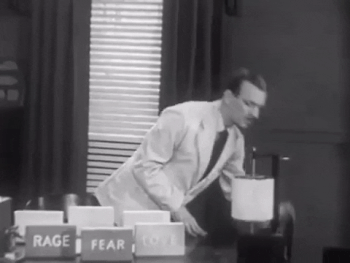 Credit source: giphy.com
Credit source: giphy.com
What is brand personification, and why should you care?
Behavioral scientist Jennifer Aaker wrote a key article in 1997. She defines brand personality as “the set of human characteristics associated with a brand.”
How would you characterize yourself? Maybe you are fun-loving, artistic, and candid. Or you could be clever, disciplined, and intense. We all have an idea of our “self” that affects how we interact with others daily.
As humans, we naturally want to apply human personalities to non-human creatures and inanimate objects (e.g., bumble bees are cute and clumsy while wasps are jerks).
It’s called anthropomorphism. It helps us categorize others and simplify our relationship to them. In a word, it makes us feel safe.
The good news is, we can apply this psychology to your brand, too.
Aaker explains that brand personality isn’t focused on product-related attributes, like the non-stick qualities of a frying pan. Rather, it is based on symbolic or self-expressive qualities.
For example, a 2019 Volkswagen Beetle gets a solid 33 miles per gallon on the highway. However, its charming and quaint vintage-inspired shape has likely inspired many more purchases.
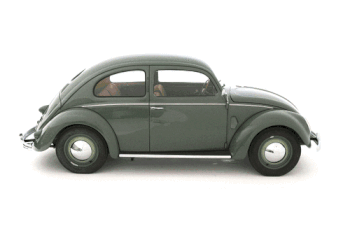 Credit source: giphy.com
Credit source: giphy.com
Brand personality may also be based on components of a company like an actual person, such as the CEO. Or it could represent the company name or logo, pricing, and more.
Reasons to create a brand mascot
Why would you personify your brand?
A study was performed using the Brand Personality Test, in which participants labeled brands with personality adjectives.
This study suggests that brand personality:
Increases consumer preference and usage
Compels customers to feel emotion and desire
Increases customer trust and loyalty
It seems like creating a personality for your brand will result in happier customers willing to stick with your brand for longer. Win-win!
Real-life examples of brand mascots from the experts
To get some branding ideas, check out these popular mascots and characters from over the years.
Kool-Aid Man
Kool-Aid Man of Kool-Aid could be described as the life of the party. He embodies summer fun through a deliciously sweet drink. His smiling face can be found on Kool-Aid packaging, making it an easy favorite among young children.
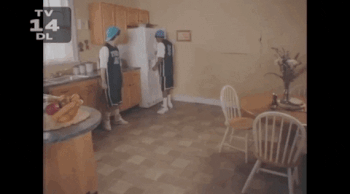 Credit source: giphy.com
Credit source: giphy.com
AOL Running Man
This brand revolutionized communication in the late 1990s. The AOL Running Man exemplifies mobility, speed, and on-the-go lifestyles, perfect for the first mainstream online chatroom.
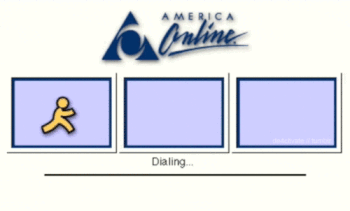 Credit source: giphy.com
Credit source: giphy.com
Flo from Progressive
If you’ve watched any cable TV, it’s hard not to know who Flo is. Flo from Progressive is the hip, comical, helpful millennial salesperson. Her contagious smile and iconic hair are admired by fan bases across the internet, proving the success of Progressive’s mascot.
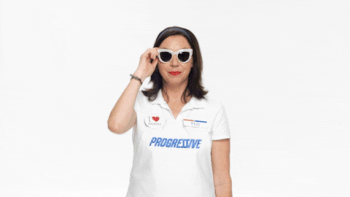
Credit source: giphy.com
Newman’s Own
This salad dressing’s branding is based on the founder and American actor, Paul Newman. While Newman was a real person, he is made into a character through the dressing flavors. See his tilted straw hat on his family recipe Italian dressing or his beekeeping suit on the honey mustard dressing.
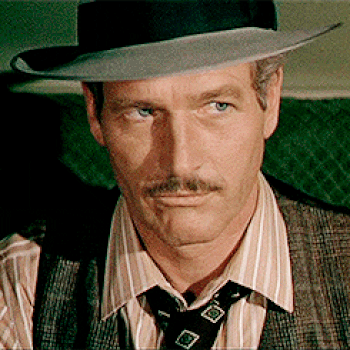 Credit source: giphy.com
Credit source: giphy.com
You don’t need a character to add personality to your brand
Brand personalities that aren’t centered around a mascot are just as relevant. Check out these other brands with strong message strategies.
REI
REI is an outdoor gear and apparel company with a well-defined personality. They consistently campaign themselves as adventurous, powerful, and rugged. Their anthropomorphized brand might be a rock-climbing, biking, granola-loving hippie with all the latest gear to upgrade their next trip to the mountains.
Kylie Cosmetics
Kylie Jenner’s cosmetics brand likely wouldn’t have taken off if not for the celebrity’s popularity. Kylie exudes glamour, extreme wealth, and hyper-femininity, which translates to her glossy brand. Interestingly, she also tries to keep it “real” with her fans and be relatable and relevant. She does this by documenting her life with her daughter on YouTube and Instagram.
L.L. Bean
You might hear this company say “Grab your tote bag and throw on a pair of chinos because we’re going to the lake.” L.L. Bean is all about casual outdoor fun with family and friends. It’s kind of like REI’s cousin with three kids under three.
Do you have to have a mascot?
Not necessarily. Remember, this isn’t a one-size-fits-all solution. Consider your audience and your promise statement. Depending on your industry, personifying your brand can be tacky (think high-end jeweler) or even inappropriate (such as for hospice care).
However, if you determine that a mascot fits your brand’s message strategy, try out these tips to pick your perfect character.
How to create a character by identifying your brand personality
1. Create your Brand Personality test
Start by compiling all your brand assets, including but not limited to:
Logos
Brand colors
Product and service offerings
Company values
Company history story
Leadership
Mission statement
Reviewing these all at once will give you a good idea of your brand’s “mood.” You can turn this mood into words by creating a personality adjective list like the Brand Personality test.
Sit down with other decision makers in your company and review your assets. Then, look through the list of adjectives and select three to five words that you think best represent your brand.
 Credit source: giphy.com
Credit source: giphy.com
Compare them with your teammates. Are they similar, or do they differ wildly? If they are completely different, you may want to reconsider your message strategy.
2. Survey customers about your brand
Once you have your list, send a survey to your customers asking them the same question. How would they define your company using three to five adjectives from the list?
This will help you get an unbiased answer and see how your customers perceive your brand. You can base your mascot on these answers. Or you can choose a mascot that will shift the perception of your brand according to your vision.
3. Talk to your customers
Another great way to nail down your character is to ask how you want your customers to feel when they think about your brand.
Do you want them to feel charming and feminine, rebellious and gritty, or conservative and traditional? Emotions and desire are powerful tools you can use to build your brand image through personification.
4. Choose a mascot type
Finally, what category best suits your brand? Should the character be human or animal or thing?
It can be dizzying when you think about how many directions you can take your mascot. Use the personality adjective list you created to help you narrow down what fits your image.
A cupcake store may not want to use a shark as its mascot—unless the bakery overlooks the ocean, and the shark is a swirly-pink friendly shark with a gnarly sweet tooth.
Or a hardware store chain could reconsider having a chainsaw as their mascot for something more creative and meaningful, like the kind and generous grandfather who started the company years ago.
5. Be yourself
Here are our last two pieces of advice to you before you select your mascot: choose authenticity and have fun with it.
Don’t try to be something you’re not. Trust us, customers will sense it right away, and it will hamper their trust in you.
The whole reason you want a mascot in the first place is to be relatable and memorable. Take the time to find something that suits your brand perfectly and conveys your message to your audience effortlessly. That’s one of the secrets for what makes a message effective.
And enjoy the process. It is an exciting part of your brand identity. Unleash your creativity and collaborate with others to discover the endless possibilities of brand personality.
 Credit source: giphy.com
Credit source: giphy.com
Sample adding some flair to your message strategy with a mascot
When your customer thinks of your brand, do they laugh, feel comforted, or want to imitate it? Evoke these emotions and build a relationship with your audience by developing a mascot.
Using the power of psychology, you can solidify your message strategy and create closer relationships with your customers.
Need help determining if you should personify your brand? Send us a message if you’d like to chat about your brand image and strengthen your message strategy.
Related:




